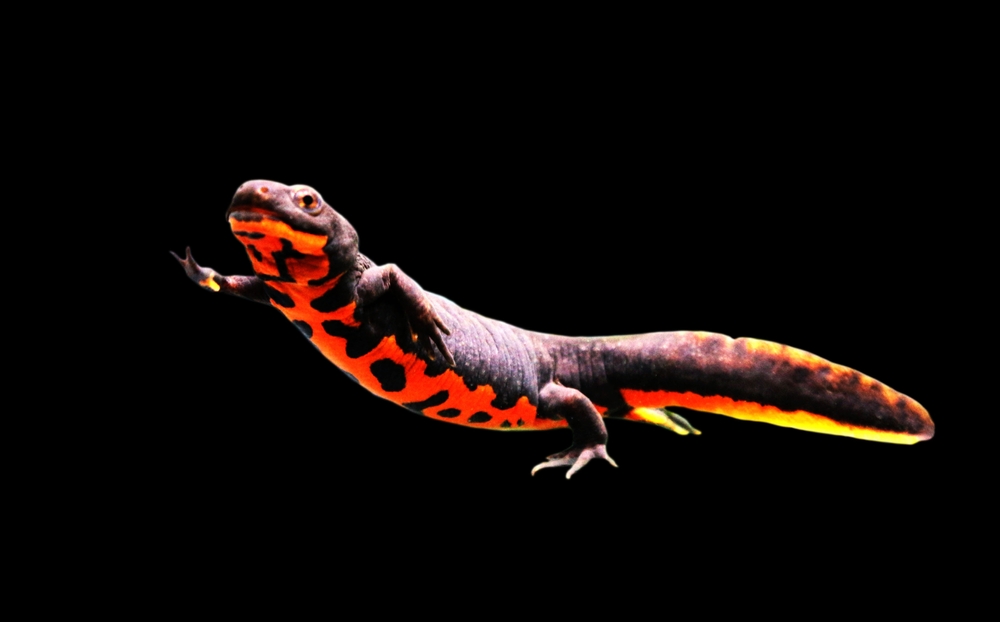Uniqueness
Aposematic Coloration:
One of the most striking features of the Chinese fire-bellied newt (Cynops orientalis) is its bright red or orange belly, contrasted sharply with its dark dorsal surface. This bold coloration serves as an aposematic warning to predators, signaling that the newt is toxic or unpalatable if consumed.
Toxin Secretion:
Their skin contains mild neurotoxins that deter predators. While not harmful to humans through casual contact, these toxins are effective in discouraging fish, birds, and mammals from eating them. This chemical defense complements their visual warnings.
Semi-Aquatic Lifestyle:
Unlike many salamanders that spend much of their time on land, Chinese fire-bellied newts are highly aquatic, often remaining submerged for long periods. They only venture onto land occasionally and rely on both lungs and skin respiration to breathe.
Internal Fertilization via Spermatophore:
Males deposit a spermatophore (a packet of sperm) that females pick up with their cloaca—an advanced form of internal fertilization among amphibians. This method increases fertilization success and is an evolutionary step beyond external spawning.
Metamorphic Plasticity:
Juveniles (efts) may remain in a terrestrial phase for a year or more before returning to an aquatic lifestyle as adults. This flexibility in life stages allows them to survive in fluctuating environments, especially during dry seasons.
Regeneration Ability:
Like many salamanders, Chinese fire-bellied newts possess the remarkable ability to regenerate lost limbs, tails, and even parts of internal organs. This regenerative power has made them subjects of interest in biomedical research.
Captive Durability and Popularity:
Their hardiness, long lifespan, and bold coloration make them one of the most popular amphibians in the pet trade. Unlike more sensitive amphibians, they adapt well to captive environments when properly cared for.
Summary:
The Chinese fire-bellied newt is a highly distinctive amphibian, blending vivid visual defenses, toxin production, advanced reproduction, and regenerative biology. Its semi-aquatic adaptability, internal fertilization, and scientific importance make it both ecologically and biologically unique among amphibians.



































































